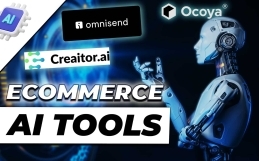Customers worldwide are becoming increasingly demanding. Their wishes and needs are becoming more individual, their expectations are increasing. This is related to an ever-increasing base of information that can be accessed. Moreover, with a market that is becoming more global and with digitalization, which has opened up many new opportunities.
In order to be better prepared to meet the needs of customers in any industry and to have appropriate offerings available, the customer must be viewed as a very crucial part of the business itself. By doing this, companies can open themselves up to customer learning. It is precisely the digital that makes this learning more effective than it has ever been before.
What does “customer orientation” really mean?
Every company would certainly claim to act “customer-oriented”. But customer orientation can be defined completely differently. The big problem here is that few companies are willing to learn permanently from their customers. Or to put it another way: you miss the opportunities to recognize at various points which learnings arise quite automatically.
If these opportunities are missed or ignored, companies quickly go in circles. Corporate strategies are not adapted or are only overturned to a limited extent. While they may have once been tailored to customers of a particular time, in the fast-changing digital age they become obsolete within months. If the competition is more vigilant and consciously learns from its customers, it hangs you out to dry.
Develop a concept of customer orientation
To avoid this, a holistic concept of customer orientation must be developed. That concept requires a mission statement that is firmly anchored in the corporate strategy. Every member of the company must ultimately adhere to and implement this mission statement. Regular workshops and e-learning offerings help to give employees, in turn, the opportunity to learn from customers and thus internalize appropriate mission statements. Of course, it is important that digital competencies are available throughout the entire hierarchy and can be built upon.
In other words, external and internal customer orientation must come to the forefront of all corporate thinking and action. In this context, customer feedback becomes perhaps the most important measuring instrument of corporate success. Because even if sales are right, certain customer feedback well in advance can ensure that sales slumps and problems in the future are avoided. And what’s more, customers can help optimize business processes and thus gain an immense competitive advantage.
Communication with customers
Learning from customers is only possible if there is a constant exchange with them. First of all, this requires people in the company who want to act and work in a customer-oriented manner, as well as managers who value and reward customer service as an achievement.
If these conditions are met, the right channels must be found. According to the global study “Consumer Engagement Best Practices for 2020,” what is most important to customers is that they can decide for themselves how the company contacts them. They also want to have the option of simply exiting the communication channel again. Customers also want to be able to respond to messages simply. If these messages are also personalized, the company has the greatest chance of not only successfully contacting customers, but voluntarily receiving helpful information from them.
The communication channel – email, social media or even phone – should also be adapted to the nature of the message. Direct feedback on contact with the customer, for example after a purchase in the online store, can be obtained by e-mail. This gives the customer time to process the experience and respond when they want. General surveys on the quality of products, for example, can succeed via social media. Here, the company can publicly respond to specific messages in a targeted manner to show that customer concerns are highly valued and seen. But communicating with customers goes beyond linguistic dialog. Because communicating also means that wishes and opinions expressed by the customer must be correctly understood and analyzed. That has to be learned.
Communication also means learning to read what you hear
Communication is not a purely linguistic process, but also a cognitive one. This means that employees must learn to adjust their attitude. Just because questions like “What can I do for you?” or “How can I help you?” come up in customer contact doesn’t mean that the willingness to address any customer needs is really there. Or, first of all, to understand these needs in the first place and to grasp their relevance.
Part of customer communication is therefore also reading between the lines and fulfilling the open and indirectly communicated wishes of customers. In turn, lasting lessons can be learned from them. And this learning must be passed on as knowledge – for example during meetings in which customer feedback is discussed and in which, in turn, employees also learn how this feedback is to be handled and evaluated.
The importance of dialog with customers is demonstrated, for example, by dialog marketing, which is an important tool for many companies today. In 2019, for example, a full 40.4 billion euros in advertising spending went into dialog marketing. But this money is also rarely invested incorrectly. This is because dialog marketing involves deeper communication with customers than conventional customer contact. Here, too, customer orientation thus plays the central role.
By deliberately using direct dialog with customers as advertising, valuable information about customers can be gained on the one hand. On the other hand, the customer is regarded and treated as a human being and is thus more strongly bound to the company. If the company’s offering improves as a result of mutual listening and exchange, everyone benefits from the dialog.
How customers drive a company forward
If customers accompany a company in every step that is taken and become important opinion leaders in internal development and decision-making processes, much can be learned from them.
At the forefront of this is learning whether the promise that a company makes to its customers actually reaches them in the planned form. If the direct or indirectly communicated feedback from customers on this is negative, it is possible to react immediately. Why is there a discrepancy here? Where do plans and ideas clash with practice?
If you are always close to the customer, you can also think from the customer’s point of view. Precise analyses, systematic evaluations and direct feedback help to understand customers sometimes better than they understand themselves. This makes it possible to know and satisfy customers’ needs and expectations before they are even aware of them. This means that customers can sometimes be offered more than is actually expected of them. This also creates a positive differentiation from the competition. Digital learning is an ideal way to pass on to employees the data about customers and the associated content that is already available in digital form in most cases.
Get an opinion on customer orientation
Customers can ultimately also be asked quite explicitly for their opinion regarding the company’s customer orientation. The targeted feedback on this can provide additional input that helps improve support and meet customer requests.
Questions and requests that could be asked in such a customer survey include:
- How would you rate customer orientation in general?
- What is going well around customer orientation? What is going badly?
- Could you please give a concrete example from the last six months that you consider to be an experience of particularly good as well as particularly poor customer orientation?
- What services are you missing?
- How do you experience dealing with feedback, complaints, reviews and questions?
Do you have questions or need an individual offer? Do not hesitate to contact us.
- 0/5
- 0 ratings
| Very bad! | Bad | Hmmm | Oke | Good! |
|---|---|---|---|---|
| 0% | 0% | 0% | 0% | 0% |
Haben Sie Fragen oder brauchen ein individuelles Angebot? Zögern Sie nicht, uns zu kontaktieren.



















